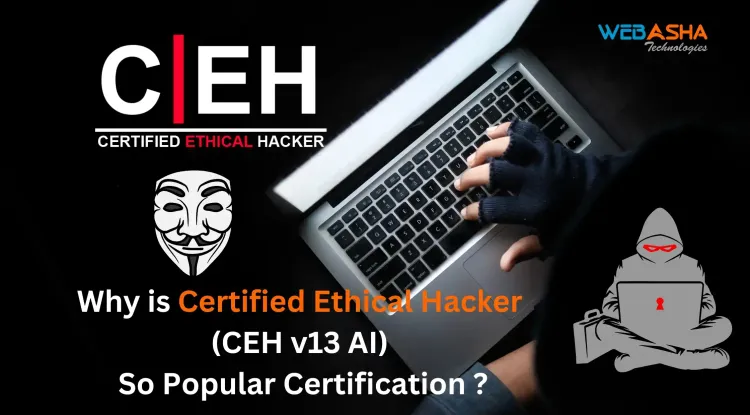How Hackers Use BlackEye to Clone Websites for Phishing Scams | The Complete Guide
BlackEye is a powerful phishing toolkit that enables hackers to clone legitimate websites and trick users into entering their login credentials. By using HTML and JavaScript cloning, URL spoofing, SSL deception, and social engineering techniques, BlackEye makes fake login pages appear identical to real ones. Cybercriminals distribute these phishing pages via emails, SMS, and social media, capturing sensitive data such as usernames, passwords, and OTPs. Some advanced versions of BlackEye can even bypass Two-Factor Authentication (2FA) using real-time phishing techniques. To protect yourself from BlackEye phishing attacks, always check URLs carefully, avoid clicking suspicious links, enable multi-factor authentication (MFA), and use browser security features. Organizations should implement security awareness training and anti-phishing tools to defend against such cyber threats. Understanding how BlackEye phishing pages imitate real websites can help both individuals and cybersecurity

Table of Contents
- Introduction
- What is BlackEye?
- Key Features of BlackEye
- Techniques Used by BlackEye to Imitate Real Websites
- How to Detect and Prevent BlackEye Phishing Attacks
- Legal and Ethical Concerns
- Conclusion
- Frequently Asked Questions (FAQs)
Introduction
Phishing attacks are one of the most common cybersecurity threats, tricking users into revealing sensitive information like login credentials and banking details. BlackEye is one of the most widely used phishing toolkits, designed to create realistic-looking phishing pages that mimic legitimate websites. By using social engineering and cloning techniques, attackers can deceive users into entering their personal information.
In this blog, we’ll explore how BlackEye phishing pages successfully imitate real websites, the techniques used, and how you can detect and protect yourself from such attacks.
What is BlackEye?
BlackEye is an open-source phishing tool that helps attackers generate realistic-looking fake login pages for various websites. It automates the process of:
- Cloning legitimate websites
- Hosting phishing pages
- Capturing user credentials in real-time
BlackEye is used by ethical hackers and cybersecurity researchers for penetration testing to identify security vulnerabilities and educate users about the dangers of phishing attacks. However, cybercriminals also exploit this tool for malicious purposes.
Key Features of BlackEye
- Supports phishing templates for popular websites like Facebook, Instagram, Twitter, Gmail, and banking sites
- Uses HTML and JavaScript cloning to mimic real login pages
- Can bypass two-factor authentication (2FA) using advanced techniques
- Works with local servers and Ngrok for external access
- Automates the process of credential harvesting
How BlackEye Works
BlackEye operates by cloning legitimate web pages and capturing user credentials when victims enter their login details. The basic workflow is as follows:
1. Selecting a Target Website
Attackers choose a popular website like Facebook, Gmail, or PayPal, where users are likely to log in.
2. Cloning the Website
BlackEye creates an exact copy of the target’s login page by copying its HTML, CSS, and JavaScript. This makes the fake page look indistinguishable from the real one.
3. Hosting the Phishing Page
The attacker hosts the phishing page on a temporary server or spoofed domain using:
- Localhost services like Ngrok
- Free hosting services or compromised websites
- Fake subdomains that resemble real domains
4. Social Engineering
Victims are tricked into clicking the phishing link via:
- Emails pretending to be from a trusted organization
- SMS messages (Smishing) with fake alerts
- Social media messages containing malicious links
5. Credential Capture
Once the victim enters their login credentials, BlackEye records them and sends the data to the attacker in real time. Some versions also include keylogging and session hijacking to bypass security measures.
Techniques Used by BlackEye to Imitate Real Websites
BlackEye uses several advanced phishing techniques to make fake pages look real and deceive users. Here are some of the most common:
1. HTML and CSS Cloning
- BlackEye copies the source code of the original website, including its HTML structure and CSS styling.
- This ensures the fake page looks visually identical to the real one.
2. JavaScript Injection
- BlackEye can embed JavaScript functions that manipulate the login form and capture keystrokes.
- Some versions modify JavaScript to redirect users after logging in, making it seem like nothing suspicious happened.
3. URL Spoofing
- Attackers use homograph attacks (e.g., "rnicrosoft.com" instead of "microsoft.com").
- They may create subdomains like "secure-paypal-login.com" to make the URL appear legitimate.
4. HTTPS and SSL Deception
- Some phishing pages use free SSL certificates (e.g., Let’s Encrypt) to display a padlock icon, making the page appear secure.
- Many users assume a green padlock = safe website, which isn’t always true.
5. Two-Factor Authentication (2FA) Bypass
- BlackEye can capture one-time passwords (OTPs) using real-time phishing.
- Some attacks involve reverse proxies that intercept login credentials and OTPs.
6. Mobile-Optimized Phishing
- Many phishing pages are designed to be mobile-friendly, making them harder to detect.
- Users on mobile devices are more likely to overlook small URL differences or missing security indicators.
How to Detect and Prevent BlackEye Phishing Attacks
1. Check the URL Carefully
- Look for misspelled domain names or unusual subdomains.
- Use browser extensions that detect phishing URLs.
2. Verify HTTPS and Certificates
- Don't trust a site just because it has a padlock icon.
- Check if the SSL certificate belongs to the legitimate company.
3. Avoid Clicking Suspicious Links
- Hover over links in emails and messages before clicking.
- Be cautious of shortened URLs (e.g., bit.ly, TinyURL).
4. Use Multi-Factor Authentication (MFA)
- Even if credentials are stolen, MFA adds an extra layer of security.
- Use hardware security keys like YubiKey for stronger protection.
5. Enable Email and Browser Security Features
- Activate anti-phishing protection in your email and web browser.
- Use security software that detects phishing attacks in real-time.
6. Stay Educated on Phishing Tactics
- Regularly review phishing trends and attack methods.
- Conduct security awareness training in organizations.
Legal and Ethical Concerns
While tools like BlackEye can be used for penetration testing, using them to steal credentials is illegal and punishable by law. Cybercriminals caught using phishing tools face:
- Fines and imprisonment under cybersecurity laws
- Permanent bans from online services
- Legal action by affected companies and victims
Ethical hackers use BlackEye responsibly for security awareness and testing under legal guidelines. Always obtain proper authorization before conducting phishing simulations.
Conclusion
BlackEye is a powerful phishing toolkit that helps attackers create realistic fake login pages to steal user credentials. By cloning legitimate websites and using social engineering tactics, these phishing pages successfully deceive unsuspecting victims.
However, by staying informed and following best security practices, users can identify and avoid phishing attacks. Organizations must implement cybersecurity awareness programs, multi-factor authentication, and phishing detection systems to mitigate such risks.
Understanding how BlackEye phishing pages work helps both cybersecurity professionals and users strengthen their defenses against phishing threats. Stay vigilant, verify URLs, and never enter sensitive information on suspicious sites.
Frequently Asked Questions (FAQs)
Basics of BlackEye and Phishing
1. What is BlackEye in cybersecurity?
BlackEye is an open-source phishing tool used to create fake login pages that steal user credentials.
2. How does BlackEye phishing work?
It clones real websites, hosts fake login pages, and captures usernames and passwords when victims enter their details.
3. Is BlackEye illegal?
Yes, using BlackEye for unauthorized phishing is illegal and can result in severe penalties.
4. What types of websites can BlackEye clone?
BlackEye can imitate social media platforms, banking sites, email providers, and corporate logins.
5. Can BlackEye bypass Two-Factor Authentication (2FA)?
Yes, advanced versions use real-time phishing techniques to capture OTPs and bypass 2FA.
6. How do hackers spread BlackEye phishing pages?
Through phishing emails, fake SMS alerts, social media links, and malicious websites.
7. How does BlackEye capture login credentials?
When a victim enters credentials on a fake page, BlackEye records and sends them to the attacker.
8. Is BlackEye used for ethical hacking?
Yes, ethical hackers use it for penetration testing to educate users on phishing risks.
9. What programming languages are used in BlackEye?
BlackEye relies on HTML, CSS, JavaScript, Python, and Bash scripting.
10. Can BlackEye phishing work on mobile devices?
Yes, phishing pages are often mobile-friendly, making them harder to detect.
Detection and Prevention of BlackEye Phishing
11. How can I detect a BlackEye phishing page?
Check the URL, SSL certificate, page layout, and any unusual requests for personal information.
12. Does BlackEye use SSL to look legitimate?
Yes, some phishing sites use free SSL certificates to trick users into believing they are secure.
13. What is URL spoofing in phishing attacks?
It involves using misspelled domains or homograph attacks (e.g., “rnicrosoft.com” instead of “microsoft.com”).
14. Can browsers detect BlackEye phishing pages?
Modern browsers like Chrome, Firefox, and Edge have anti-phishing protection, but not all attacks are detected.
15. How can I protect myself from BlackEye phishing attacks?
Avoid clicking suspicious links, check URLs carefully, enable MFA, and use password managers.
16. What should I do if I enter my credentials on a phishing page?
Immediately change your password, enable MFA, and check for unauthorized account activity.
17. Are VPNs effective against phishing attacks?
VPNs protect privacy, but they do not prevent phishing attacks if you enter credentials on a fake page.
18. What is an anti-phishing browser extension?
A tool that alerts users when they visit suspected phishing websites. Examples include Netcraft and Bitdefender TrafficLight.
19. How does BlackEye spread phishing links?
Via email spoofing, SMS phishing (Smishing), social media, and compromised websites.
20. How can companies protect employees from BlackEye phishing?
By implementing cybersecurity training, email filtering, MFA, and web security tools.
Advanced Security and Ethical Concerns
21. How do ethical hackers use BlackEye?
For penetration testing, demonstrating phishing risks, and training employees on phishing awareness.
22. Can BlackEye phishing pages be hosted on real domains?
Yes, attackers sometimes buy look-alike domains to host phishing pages.
23. What is real-time phishing?
A method where hackers intercept login credentials and OTPs in real time.
24. Can password managers protect against phishing?
Yes, because they only auto-fill credentials on legitimate sites, not fake ones.
25. How do hackers send fake login pages via email?
Through email spoofing, fake sender addresses, and malicious attachments.
26. What is the role of social engineering in phishing attacks?
It manipulates victims into trusting and clicking malicious links.
27. How does Ngrok help BlackEye phishing attacks?
Ngrok allows attackers to host phishing pages on temporary URLs and make them accessible online.
28. Can BlackEye phishing pages mimic CAPTCHA?
Yes, advanced phishing pages use fake CAPTCHAs to look more convincing.
29. What are phishing-resistant authentication methods?
Hardware security keys (YubiKey), biometric authentication, and passwordless login systems.
30. What legal actions can be taken against phishing attackers?
Cybercriminals can face fines, imprisonment, and lifetime bans from online platforms.












![Top 10 Ethical Hackers in the World [2025]](https://www.webasha.com/blog/uploads/images/202408/image_100x75_66c2f983c207b.webp)

![[2025] Top 100+ VAPT Interview Questions and Answers](https://www.webasha.com/blog/uploads/images/image_100x75_6512b1e4b64f7.jpg)









